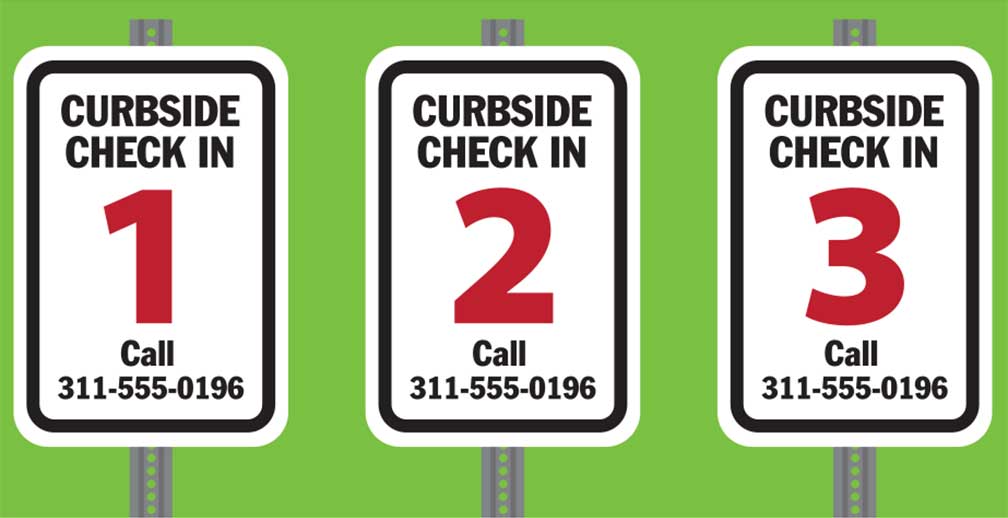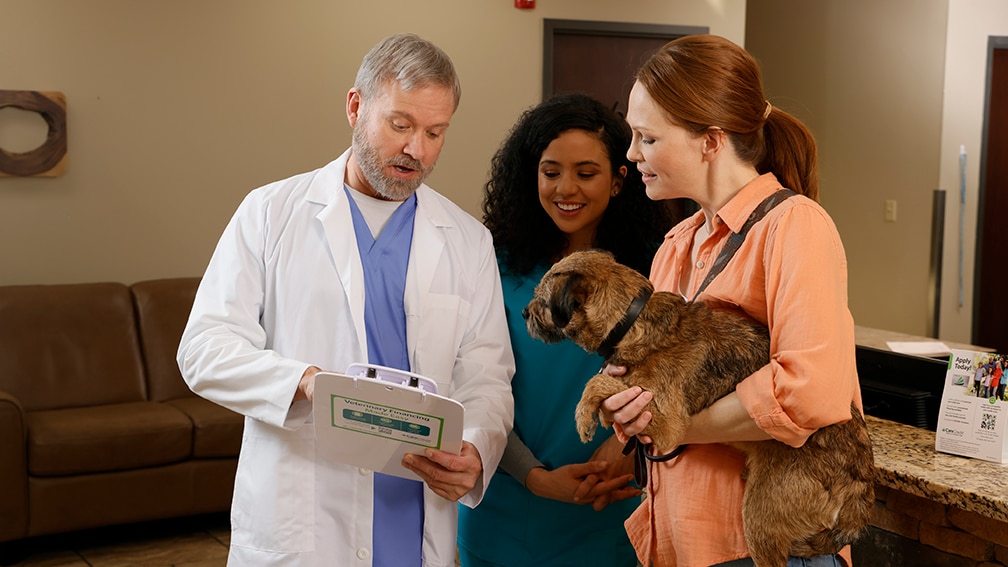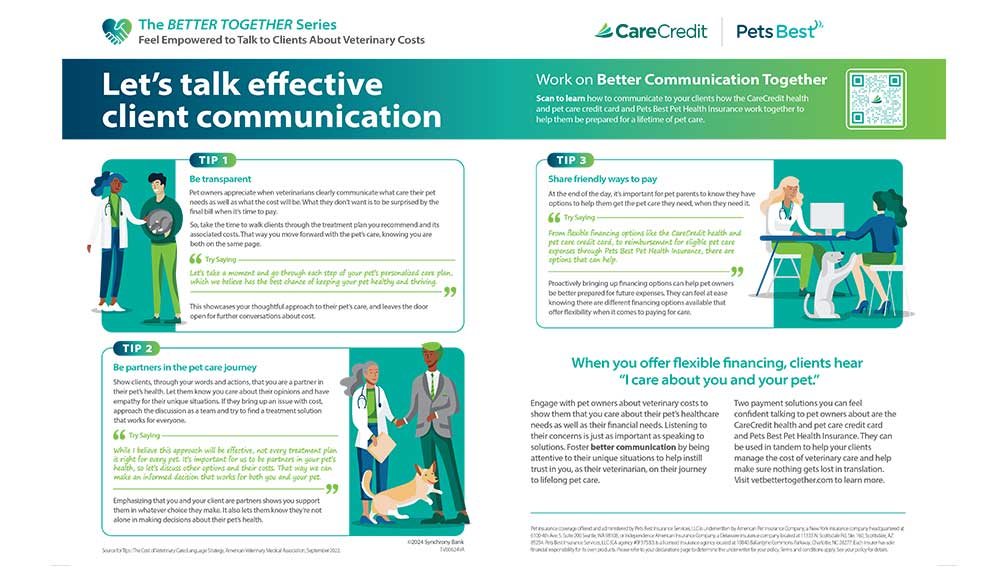The Evolution of Curbside Care: A New Standard of Modern Veterinary Care
The COVID-19 pandemic introduced curbside care, telehealth and other innovations that help vet practices offer more delivery options, improve communication, streamline workflows and reduce staff burnout. Learn about these strategies.
By Elizabeth Kowalski, C.V.T., F.F.C.P.
Certified Veterinary Technician
Posted Feb 07, 2025 - 7 min read

Veterinary medicine is always evolving, but the COVID-19 pandemic forced the profession to shift gears rapidly. Traditional visits were replaced by socially distanced solutions like curbside care and telehealth — previously unheard-of options for veterinary clients. Those early days of COVID were marked by uncertainty, but since then, many changes have evolved into valuable long-term strategies in veterinary medicine.
Clients have more options than ever for scheduling visits, engaging with the veterinary clinic and becoming partners in their pets’ healthcare. As the post-pandemic landscape unfolds, the most successful practices will adopt a forward-thinking mindset and a concierge approach that prioritizes convenience, efficiency, communication and flexibility. Curbside care, telehealth, digital communications, contactless payments and streamlined workflows may have been born during the pandemic, but practices that adopt modern versions of these changes can build lasting client relationships and a thriving clinic.
Curbside Care: From Necessity to Expectation
This new way of working gave pet owners the flexibility to choose the best care options for their pets. Methods designed to reduce human contact and keep people at home also turned out to be wildly convenient for busy pet owners. Many pet owners prefer in-person visits and are glad to have them back, but the curbside care option still appeals to some busy pet owners, parents of young children and older or immunocompromised individuals.
A December 2021 Vetsource market research study found that while some pet owners did not like curbside because they wanted to stay with their pet, others preferred curbside over a traditional visit because waiting room chaos is eliminated, their pets stay calmer and they can run errands or multitask during the visit.1 This research indicates a demand for continued curbside availability and other options that provide flexible, convenient access to care.
Forward-thinking veterinary clinics have adopted a concierge-like approach, offering clients choices in how they’d like to receive pet care. Teams that provide such diverse delivery options and promote a growth mindset are better equipped to address new challenges and refine processes to adapt to evolving needs.
Customized Care Delivery: Providing Flexible Options
In addition to enabling pet clinics and hospitals to meet all types of client expectations, this concierge-service approach also allows them to streamline workflows to improve efficiency. The post-pandemic landscape now supports more options that reduce barriers and increase care accessibility deemed inside, curbside, phoneside and homeside.
- Inside. Traditional in-clinic visits remain the foundation for physical examinations, diagnostics, procedures and nurturing the veterinarian-client-patient relationship (VCPR).
- Curbside. Curbside visits provide convenience, safety and efficiency for various visit types, intakes and medication or food pickups.
- Phoneside. Telehealth is well-suited for establishing a temporary VCPR where allowed, evaluating behavioral cases, performing routine follow-ups and providing teletriage and general advice.
- Homeside. Home visits are ideal for hospice care, end-of-life services and routine or sick care that does not require imaging.
Providing clients choices can help overcome barriers, including financial limitations, scheduling conflicts, transportation challenges and pet stress or fear. Telemedicine, in particular, has become more widespread and continues to expand. In a June 2022 ASPCA survey, 69% of pet owners who found obtaining veterinary care challenging expressed interest in telemedicine services.2 Additionally, a 2024 Journal of Feline Medicine and Surgery study on cat owner attitudes toward telemedicine found that about 85% of surveyed cat owners were very or somewhat interested in telemedicine for their cats.3 The demand for remote services exists, but veterinary practices must adjust and meet this demand.
Optimized Communication: Keeping Clients Informed
Clear and consistent communication is essential for building trusting client relationships and optimizing patient care. The pandemic pushed veterinary teams to embrace various digital communication forms that still benefit current practices. Communication through multiple means, including text messaging, email, social media, mobile apps and website updates, ensures clients receive necessary messages and information. Digitizing and automating curbside instructions, appointment reminders, confirmations, hospital news and educational materials keeps front office staff off the phones, which means they can serve more pet owners faster.
Contactless Payments: Maximizing Convenience
The convenience of contactless payments makes the care process even more seamless and relieves the veterinary team’s administrative load. Pet clinics and hospitals that accept the CareCredit health and pet care credit card can share their own custom link or posted QR code with clients to process payment using their CareCredit credit card without inconveniencing team members.
Improved Workflows: Optimizing Efficiency
Even with so much change, one thing is constant: Efficiency is the solution to workforce shortages and staff member burnout. Curbside carryover strategies proven to improve efficiency include:
- Performing a workflow inventory. A thorough review of existing workflows can identify unnecessary steps and bottlenecks to eliminate or adjust.
- Implementing digital forms. Digital forms allow seamless data collection and reduce time spent on paperwork during a visit.
- Establishing dedicated curbside areas. Designated parking spaces with adequate signage and posted instructions for curbside appointments eliminate back-and-forth calls and reduce wait times.
- Collecting updated client information. Digital data collection ensures accuracy of client information, and teams can reach clients more quickly and effectively.
- Setting boundaries to prevent burnout. Veterinary teams who are burned out cannot serve clients or meet pet needs effectively. Protect your team by setting and keeping established hours, enforcing breaks and encouraging vacations. A rested team is an efficient team!
Embracing the Concierge-Service Approach
While those in veterinary medicine may have initially been forced to adapt, the massive changes applied have endured as solutions to meeting clients where they are. Pet owner behaviors and expectations have evolved, and we must evolve along with them.
You can reach more pet owners, break down care barriers, improve efficiency, reduce staff burnout and build stronger, longer-lasting client relationships using the concierge-service approach. If you continue to employ and improve the techniques learned during the pandemic, including increased communication, expanded care options, streamlined workflows, contactless payments and flexible financing solutions like CareCredit, your forward-thinking practice will be positioned for continued success in a changing world.
A Veterinary Financing Solution for Your Clinic
Looking for a way to help your clients manage the cost of care that is needed for their pets? Consider accepting the CareCredit health and pet care credit card. CareCredit is a flexible financing solution that allows cardholders to pay for veterinary services over time,* while you get paid within two business days.
When you accept CareCredit, you will receive a custom link that allows clients to see if they prequalify with no impact to their credit score. Those who apply, if approved, can take advantage of special financing on qualifying purchases.* The entire process is mobile-friendly, leaving you free to focus on providing the care pets need.
Learn more about the CareCredit credit card as a veterinary financing solution or start the provider enrollment process by filling out this form.
Author Bio
Elizabeth Kowalski, C.V.T., has more than 10 years of experience as a certified veterinary technician. She combines years of practical knowledge with a talent and passion for writing, creating content for pet owners and veterinary professionals.
Healthcare payment and financing solution
The CareCredit health and wellness credit card helps improve the payment experience for patients and clients, and your financial performance.
Get Started*Subject to credit approval.
The information, opinions and recommendations expressed in the article are for informational purposes only. Information has been obtained from sources generally believed to be reliable. However, because of the possibility of human or mechanical error by our sources, or any other, Synchrony and any of its affiliates, including CareCredit, (collectively, “Synchrony”) does not provide any warranty as to the accuracy, adequacy, or completeness of any information for its intended purpose or any results obtained from the use of such information. The data presented in the article was current as of the time of writing. Please consult with your individual advisors with respect to any information presented.
© 2025 Synchrony Bank.
Sources:
1 Abel, Paul and Goings, Kelsey. "Insights to drive growth in the companion animal market," Vetsource. December 2021. Retrieved from: https://assets.vetsource.com/m/2d0766de6500107f/original/Home-Delivery-Market-Research-Report.pdf
2 "Pet owners need access to telemedicine amid nationwide shortage of veterinarians, new ASPCA survey reveals," ASPCA. April 10, 2023. Retrieved from: https://www.aspca.org/about-us/press-releases/pet-owners-need-access-telemedicine-amid-nationwide-shortage-veterinarians
3 Lee, Sooyoung et al. "U.S. cat caregivers’ attitudes on veterinary video telemedicine," Journal of Feline Medicine and Surgery. August 9, 2024. Retrieved from: https://journals.sagepub.com/doi/10.1177/1098612X241249623




